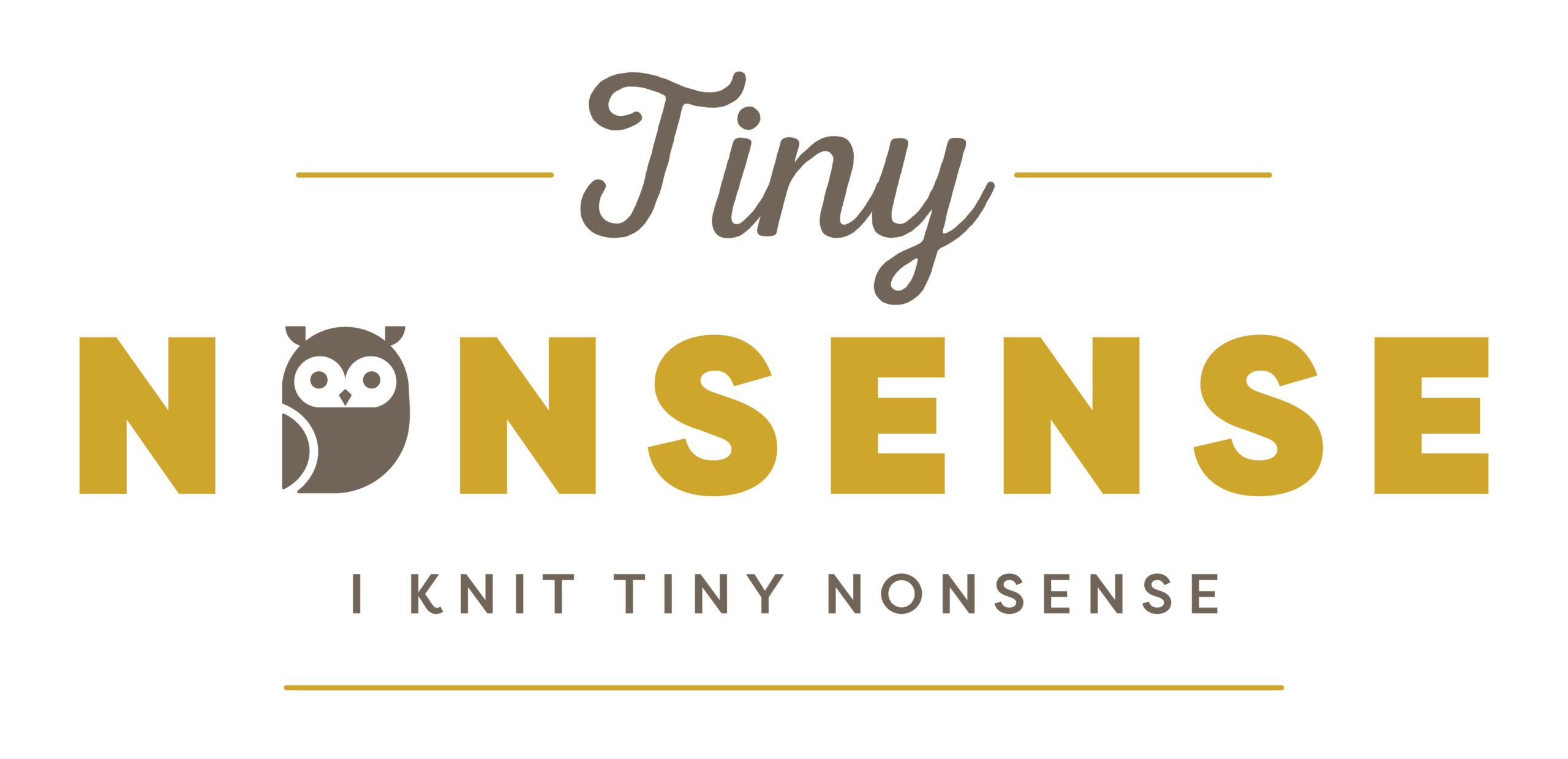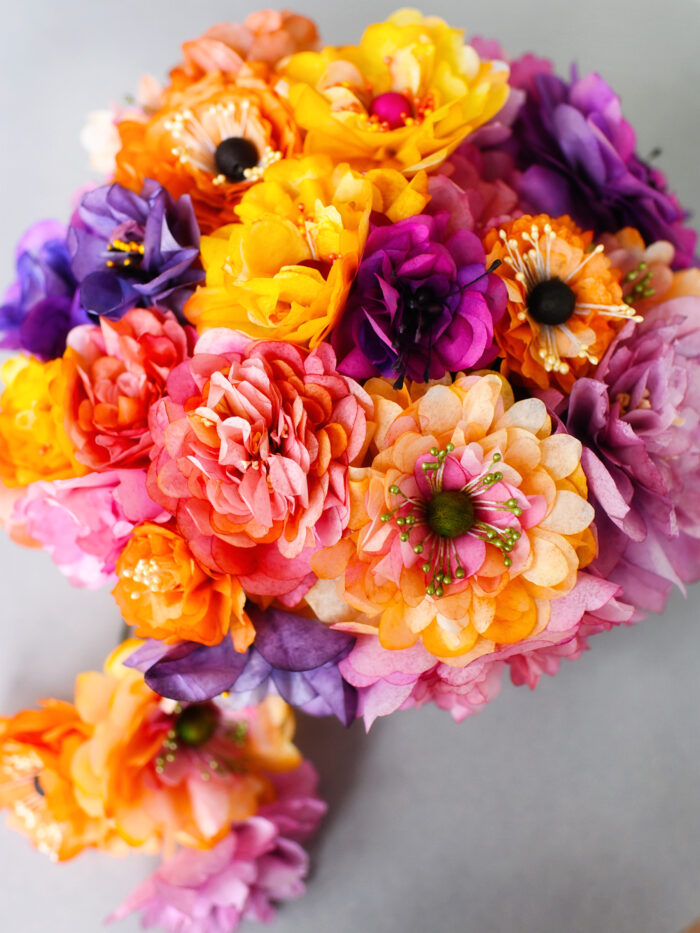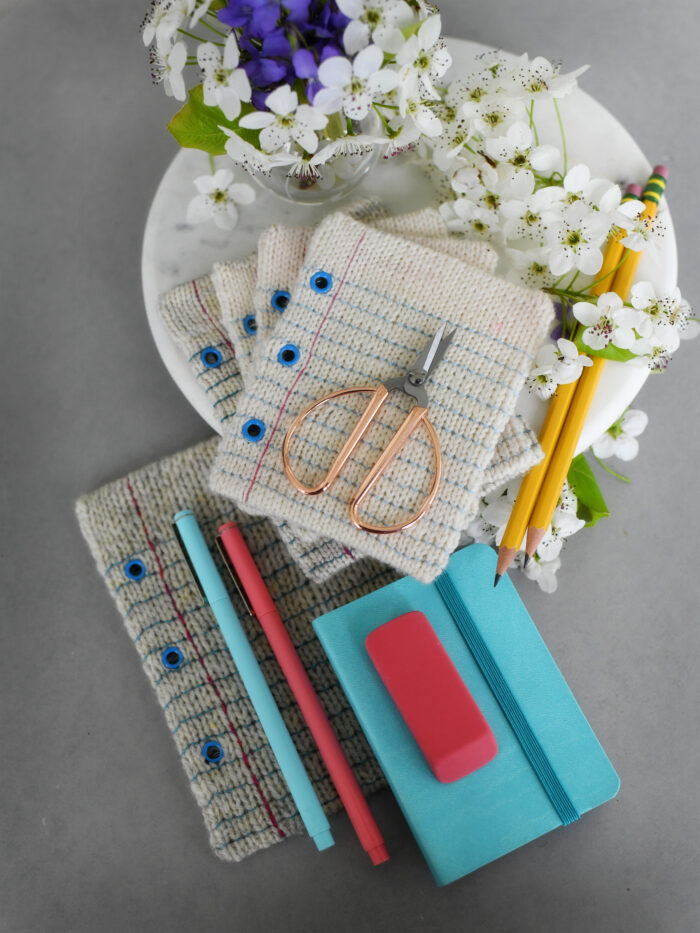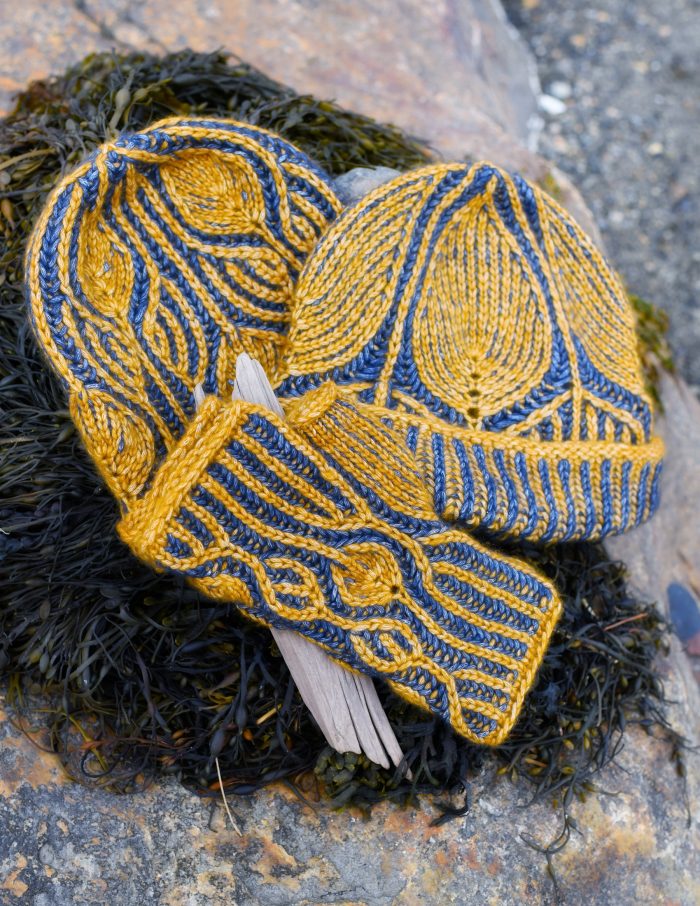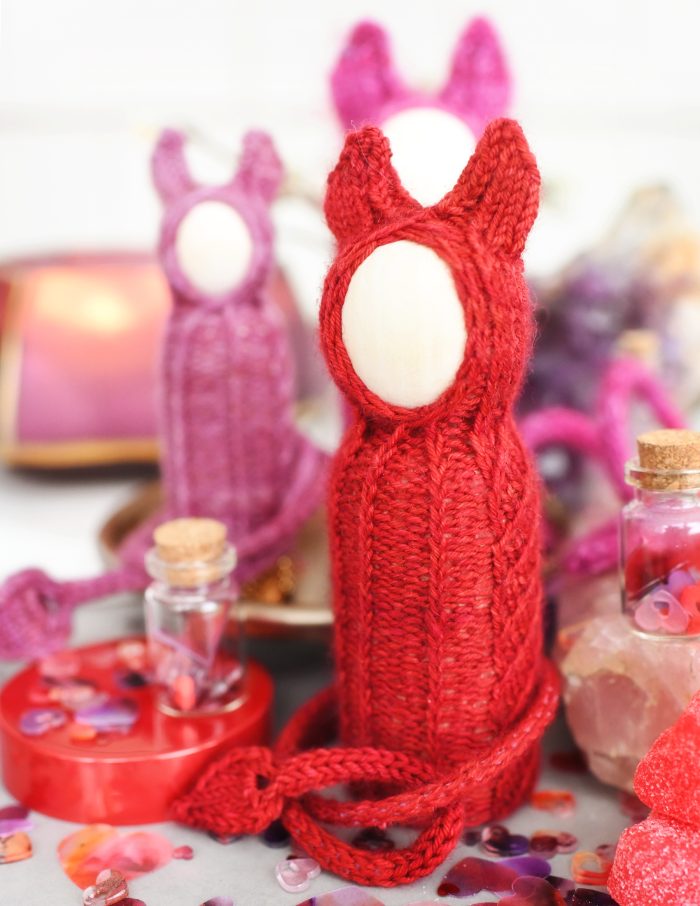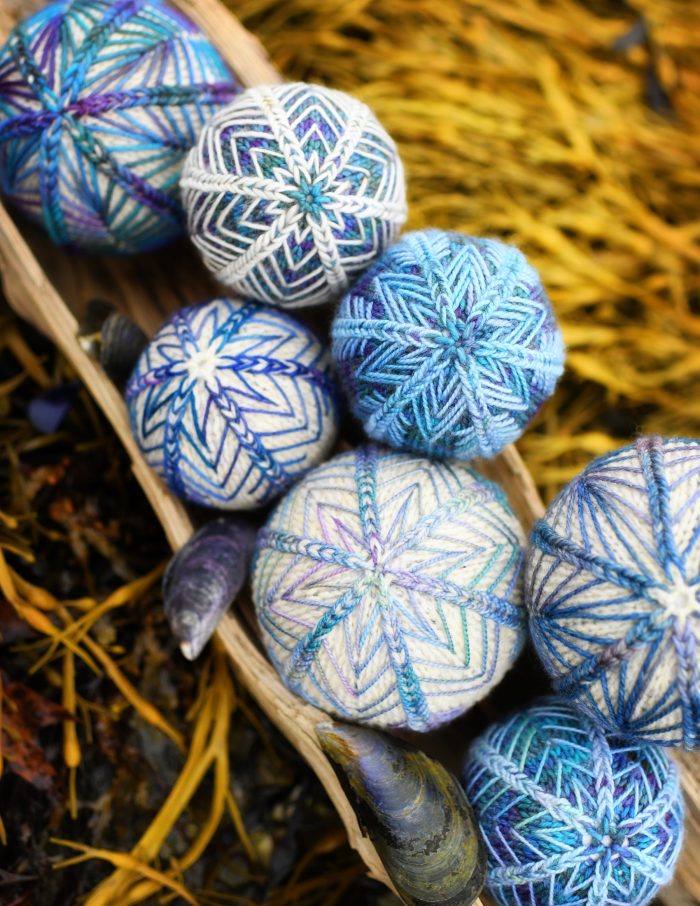Blocked
I truly believe that just about everything you knit will benefit from blocking. And yes, yes this totally includes tiny things. The tiny things block pretty much the same way as bigger things (just faster), but there is enough confusion out there over how to block stuff in general that it’s worth taking a bit of time to talk about.
I’m more or less obligated to start any discussion of blocking with a disclaimer right up top that says blocking doesn’t always involve stretching/pinning. Sometimes it does, most of the time, especially for small stuff, it does not.
So I’ll break this down into blocking with stretching and blocking without. Along the way, I’ll talk a bit about when you might do one or the other. But before you can do either, you need to wash your fabric.
Washing your fabric
I can’t make you do anything, but you really should wash your work.
Even if you wash your needles and project bags between each project, wash your hands immediately before you knit, never eat or drink near your knitting, only knit in spotlessly clean environments, and always keep your kids and pets away from your knitting (and let’s be frank, I doubt that anyone does all that), you should still wash it. Things happened to that yarn before it came to you. Making yarn is a messy business, dyeing yarn is messy business, running a yarn shop is a messy business. Trust me, you want to your work.
If that’s not enough to convince you, think about how oils and skin flakes that got transferred from your hands to your fabric as you knit can attract yarn eating critters. Plus, for a lot of the tiny things, washing them after they’re filled is tricky, so this is your best chance to wash them.
Luckily, washing your work is simple and quick.
Find something you can fill with cool, clean water (I use my bathroom sink if it’s clean, a mixing bowl if not) and a drop or two of no rinse wool wash like Soak or Eucalan. Hot water can do dastardly things to your fiber, freezing cold water is hard on your hands. Just aim for something a little too cool to take a bath in, and not so cold you’ll swear when you put your hands in it. And don’t fill your sink or bowl all the way full, leave room for your knits and your hands.
Toss your fabric in and let it get really, thoroughly soaked. This can take a surprisingly long time, especially with wool, especially with densely knit fabric. Left to their own devices, some small, tightly-knit wool things can stay dry for hours if you just toss them in a bowl of water. You can wait, or you can stick your hand in there and squeeze the knitting under water a few times to help it get soaked faster. But it is important that it get thoroughly soaked all the way through (the block won’t hold if the yarn is still dry in the middle).
Once you’re sure it’s soaked, scoop it up and squeeze out as much water as you can. Don’t wring or twist, just sort of squeeze it in your fist a few times so it’s not dripping wet. Drop it on a clean hand towel, roll it up, and squash it a bit to press out even more water.
That’s it, you’re done washing it. The blocking bit is all to do with how you arrange your fabric while you wait for it to dry, and that’s where we can get into blocking without stretching and blocking with stretching.
Blocking without stretching
The simplest version of blocking is just get your fabric really wet, smooth it out and pat it into shape, and let it dry in that shape. Most fibers will remember the shape they’re in as they dry and try to hold onto that shape until they get wet again. So if you pat everything out nice and tidy while it’s wet and let it dry that way, the fabric will hold onto that shape.
I have straight hair, and I think of blocking without stretching as the equivalent of brushing the tangles out of my hair before it dries. If I brush my hair when it’s damp, each individual strand of hair is more or less straight while it dries. My hair will be a lot more manageable from the time it’s dry until the time I wash it again.
If I don’t get around to brushing my hair before it dries, each individual strand of hair is in its own chaotic shape while it dries. No matter how carefully I brush out the tangles later, those hairs still dried in those shapes, and they’ll remember them. My hair will be kind of frizzy and fluffy until I wash it again.
Or think of a linen shirt that got 90% dry in the dryer. If you take it out, shake it, and hang it neatly on a hanger to finish drying, the fabric will be fairly smooth. If you leave it crumpled up in a ball in your dryer to finish drying, it will be wrinkled.
Blocking without stretching is just taking advantage of the memory your fabric has to make things tidy while the fabric is wet and therefore suggestible. It’s really as simple as smoothing your fabric to neaten up your stitches, laying it down somewhere that won’t be hurt by damp fabric, and making sure any straight lines are patted out straight and any curves are nice and smooth. If it’s a curved bit of fabric and you’re feeling fancy and you have something suitable handy, you might let it dry on something curved (like a spoon or a bottle) to emphasize that curve. But even that is optional.
The bare minimum really is lay it out neatly, and let it dry in that tidy shape. That’s it. That’s all. The extra time between ‘I washed it’ and ‘I blocked it’ is the minute or two it takes to primp it a bit before you let it dry.
If you tell me this is too hard, I won’t take your needles away. But I may quietly raise one eyebrow in puzzlement. Because if your fabric isn’t lacy and doesn’t need to be coaxed into a really particular shape, this is all you need to do. It’s all that about 90% of knitting needs. And it’s worth it every time.
Very occasionally, you need something a bit more forceful. And that’s where blocking with stretching comes in.
Blocking with stretching
If you want to convince your fabric to make a dramatic change (that usually means opening up to show off a lace pattern or holding a very well defined shape), you might need to let it dry under tension, instead of just smoothing it into shape.
To continue with the hair analogy from above, blocking with stretching is a lot like putting my hair in foam curlers while its wet and letting it dry all rolled up. If I do that, my hair will be curly (or at least wavy) when I take the curlers out, even though it’s normally straight. It remembers the shape it dried in. So if I hold it in a dramatic shape while it dries, it will stay in that shape (to some degree), even if it’s quite a bit different than what it would do on its own, until it gets wet again.
Or think of that linen shirt from above. If you took it out of the dryer slightly damp and ironed it dry, the fabric would be even smoother than if you hung it to dry. You could even iron in a sharp crease if you wanted to.
That’s all blocking with stretching is. You’re holding your fabric in a more exaggerated shape while it dries so that it will remember that shape later.
That usually means pinning your fabric out. To do that you figure out where you need to tug on your fabric to get the shape you need (like the points of a star or the holes in the edging of something lacy), slip rustproof pins through your fabric at those spots, and secure them something that will let you hold them under tension. I have blocking mats because I do this a lot. If you don’t have them, you can put a towel on a couch cushion or a mattress or a carpet or a cork board or whatever else you can improvise.
You can get fancy if you do this a lot (if you knit a lot of lace shawls for example, it’s worth getting blocking wires because they make it faster to pin out big curves). But especially for tiny things, you really just need a handful of pins and a cushion you can take out of service for a few hours.
And again, most knitting doesn’t need this! But for the handful of things that do, the transformation can be significant.
And look, I know some people refuse to block (or even wash) their knits as a matter of principle. Everyone gets to make their own choices, so if that’s you, cool. If you’ve made this a tenet of your personality, I’m not going to change your mind.
But if you’re just hesitant about blocking because it feels hard or daunting or you don’t think you know how, I hope this helps.
Because really, once you’ve decided to at least wash your knitting (which really…wash your knits), blocking without stretching is just a matter of smoothing it out and letting it dry nicely rather than in a crumpled heap. That’s all 90% of knits need.
And if you’ve made something fancy enough to benefit from blocking with stretching, well, you’ll be able to see all your work much better if you take a few minutes to pin things out. You worked hard on your knitting, it’s worth the time to make it shine.
And I’ll tell you a secret. If you’ve ever looked at your project and then looked at the one in the pattern pictures and thought ‘huh, mine doesn’t look like that,’ there’s like a 90% chance it’s because I am very very very particular about how I block things. I’m not a particularly good knitter. But I’m really quite good at blocking my mediocre knitting.
You can get really good at blocking your knitting (which I suspect is far from mediocre) if you want to. It makes a massive difference in how polished your finished project looks!
This is a little star (the pattern is Scintillation) before, during, and after a very firm block and you can see what a dramatic difference it makes.
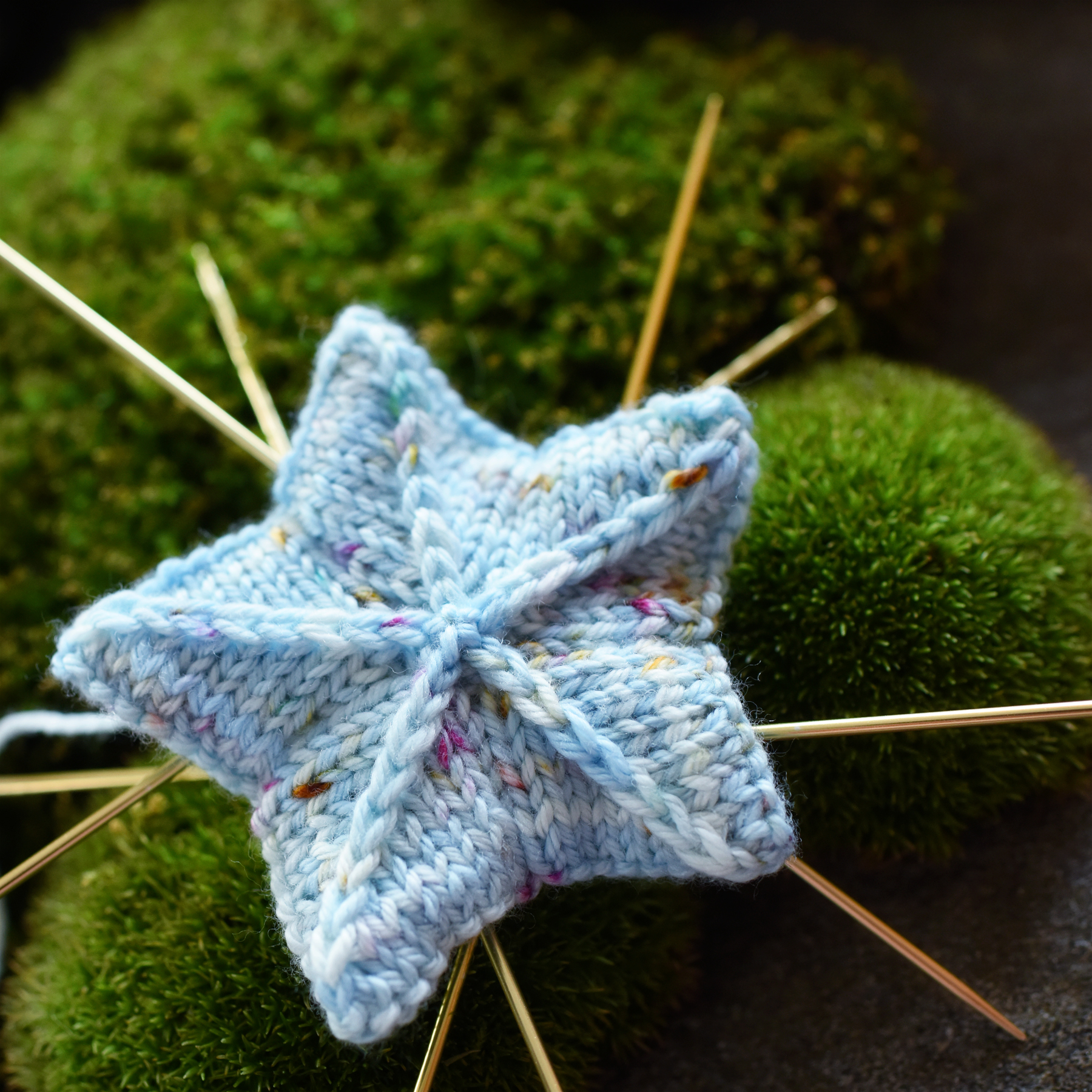
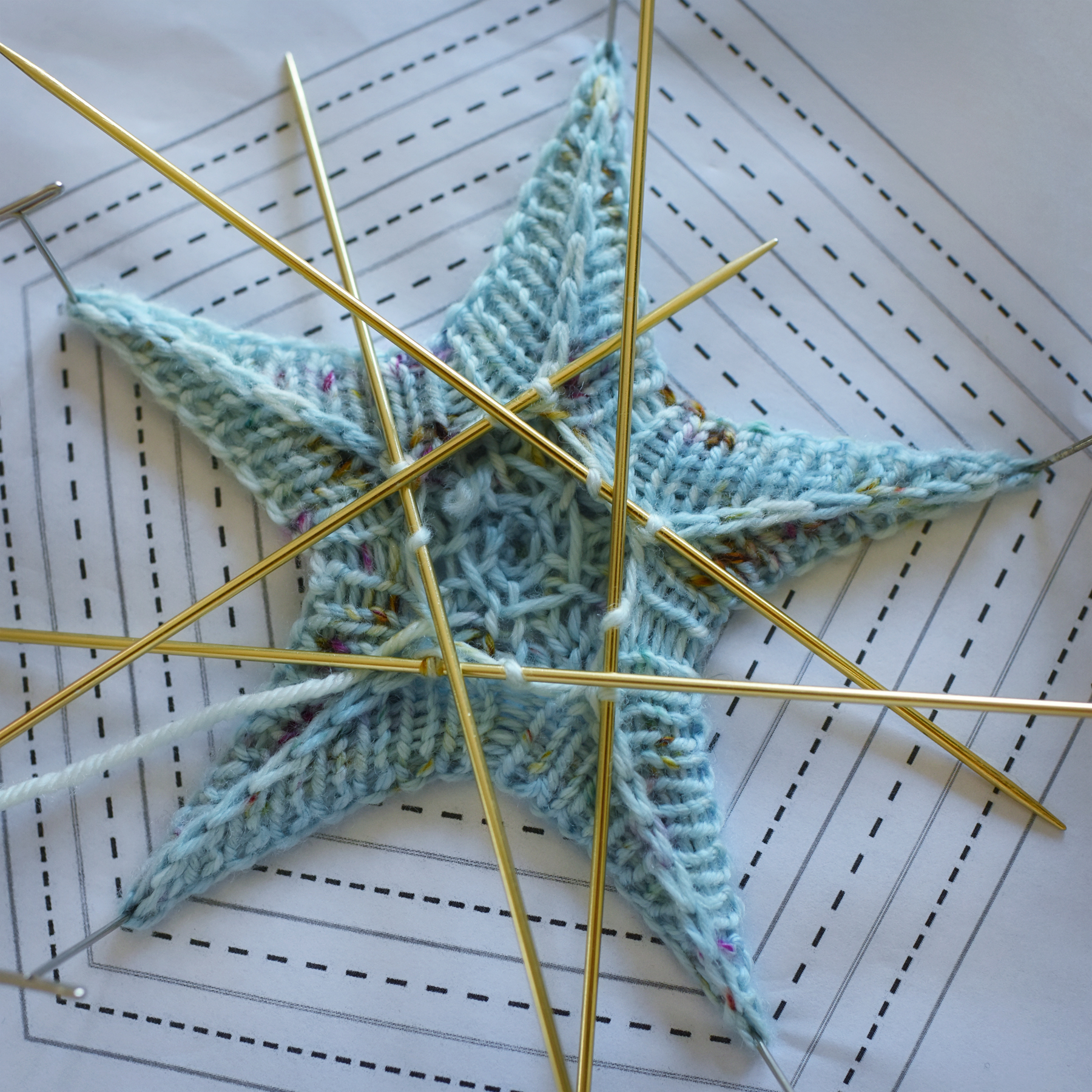
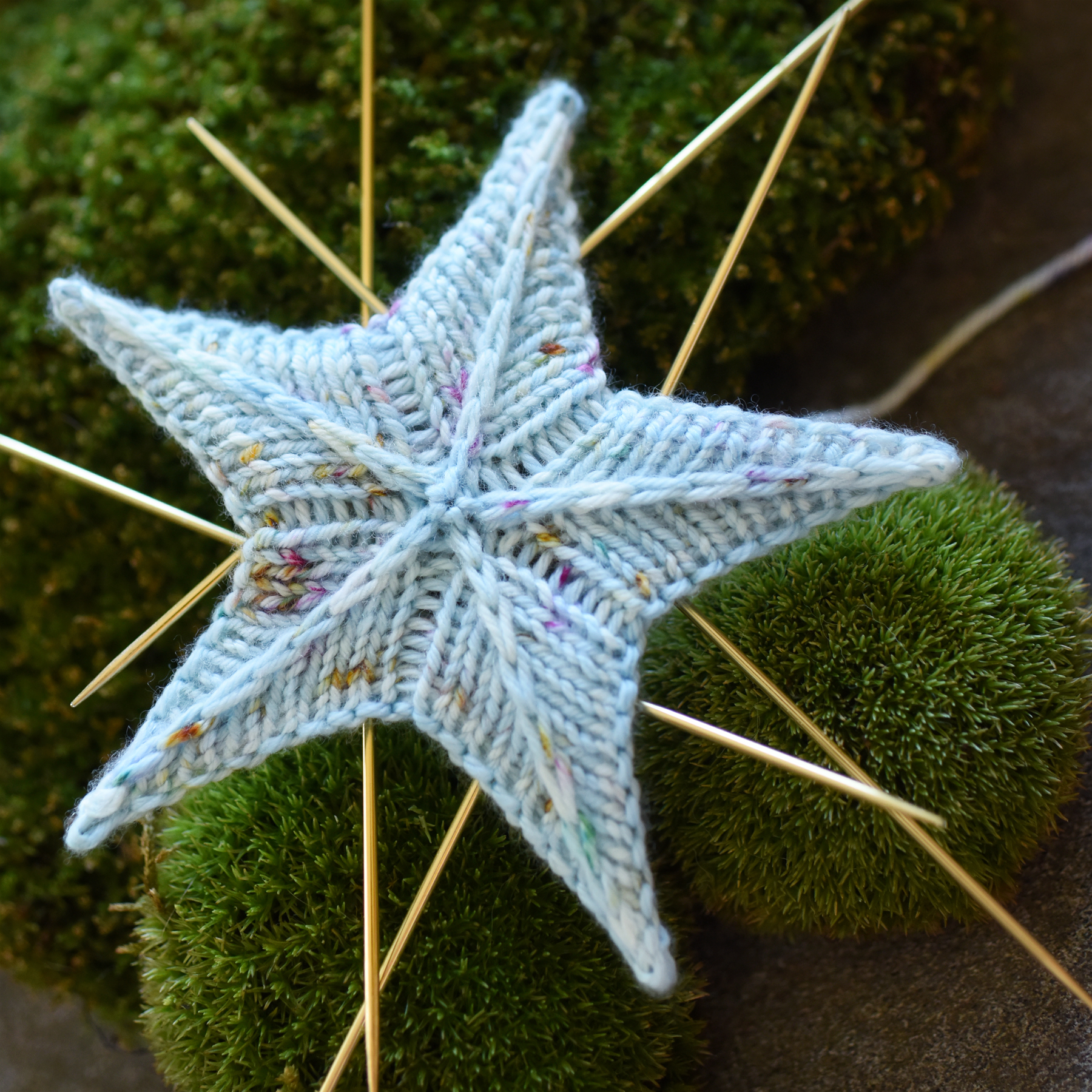
Mailing List
Want to hear when a new pattern comes out or something fun is going on? Sign up below!
Patreon
Want to support the content I create, get nifty bonus material for some of my favorite patterns, or get every new release delivered right to your inbox? Head over to patreon and sign up!
